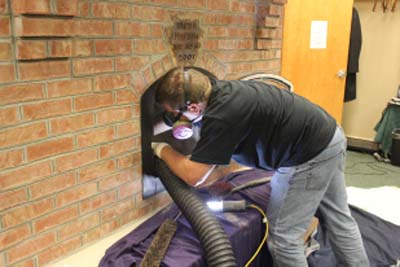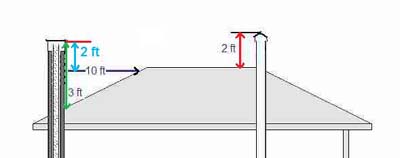Annual Chimney and Firebox Inspection
Annual Chimney and Firebox Inspection
- Professional Chimney Sweep Inspections
-

- There are three levels of inspection performed today. Level 1 inspections are done on the readily accessible portions of your chimney, meaning that no extra equipment is used by your sweep to inspect hard to reach areas. Cleanliness, creosote levels, proper installation, and clearance to combustibles will be reviewed but there will be no damage done to the structure of your chimney or fireplace. Level 2 inspections include inspecting the inaccessible portions of your chimney with a camera. Level 2 is needed when you are making changes to your existing chimney or changes happen to you. These include but are not limited to buying a new home, an earthquake or other natural disaster that can cause structural shifts and damage, adding a heating appliance, relining the flue, or changing the fuel type. Level 3 inspections take place when your sweep has performed a Level 2 inspection and finds a problem. The problem indicates that your chimney sweep needs access to construction areas that are concealed to assess complete damage, such as breaking down the drywall around your fireplace because there is water damage on the walls by the chimney.
-

- There are many common hazards that can occur with your chimney or household appliances that will cause a fire. Annual inspections by a certified chimney sweep will put you at ease because your sweep will be able to identify and recommend repairs for all of the issues we have highlighted for you in the hazards section of this site. They will be able to inspect hard to reach areas for any cracks, gaps, rust, water damage, unsafe levels of creosote, obstructions, prior chimney fire damage, unsafe drafting which can lead to carbon monoxide poisoning, as well as problems with your heating appliances or a clogged dryer vent and more. Hiring a professional chimney sweep to take away your concerns and ensure proper fireplace maintenance is the best option you have for keeping your house safe from fires.
- What are the codes and laws that are required for chimney safety?
- You can find a lot of good detailed information from the Consumer Product Safety Commission website; they provide excellent education on chimney failures and how a chimney sweep can prevent them. They also report the results of in-depth investigations associated with non-fire related carbon monoxide (CO) incidents from modern residential furnaces and chimneys. Additionally, the National Fire Protection Association has guidelines that all certified professional chimney sweeps know and understand. Their requirements encompass much more than installation of chimneys, fireplaces, and solid fuel-burning appliances in homes. They also cover design, maintenance, and inspection for homes as well as commercial and industrial buildings. These codes that are required for chimney safety are not known by the average homeowner, which is why it is so important to hire a professional sweep to inspect your chimney. This alternative is, you can buy the National Fire Protection Association's book for $49 and get cracking on a huge DIY project, but we do not recommend this. Your time and money are too valuable and they come second to you and your family's safety.
- Correct regulation heights for a safe chimney
- From on-roof access, your Chimney Sweep will measure to determine if your metal or masonry chimney is too short or too close to other features of your home to be fire safety code compliant. NFPA-211 1-8.2 specifies that "Natural draft chimneys and vents shall not terminate at an elevation less than 5ft (1.53m) above the flue collar or the highest connected draft hood outlet." This is extremely important so that there is adequate space to create the proper draft. You do not want airflow coming back down the chimney and entering your home. Additionally, the surface of the chimney top should be at least 3ft higher than the rest of the roof surface and 10ft away from any roof surface. For example, if the flue is on an upward sloping roof, it must be 3ft higher than the roof where it sits and then the chimney top must be 10ft away from the top of the upward sloping roof.
- Inspection checklist for Chimneys and Fireplace reports
- The following checklist is a strong list that you should compare against the inspection report provided by your professional chimney sweep to make sure they are providing a comprehensive and complete job. If you find that there is an item on this list that is not on your sweep’s final inspection report, you should review the item with them to make sure your chimney is completely safe.
· Creosote and heavy soot removed
· Chimney, fireplace (and woodstove if applicable) are completely clean
· Dryer vent is clear of lint
· Check for movement in chimney; displaced bricks, cracked metal, etc.
· Check for damaged or clogged chimney flues
· Check for chimney cap, crown and flashing defects
· Properly functioning chimney cleanout doors and damper
· Check for cracks, rust, and water damage on all chimneys, fireplaces and heating appliances
· Check chimney liner is present and not damaged in any way
· Fireplace, chimney, or heating appliance has proper clearance to combustibles
· Check regulation sizing for proper drafting

